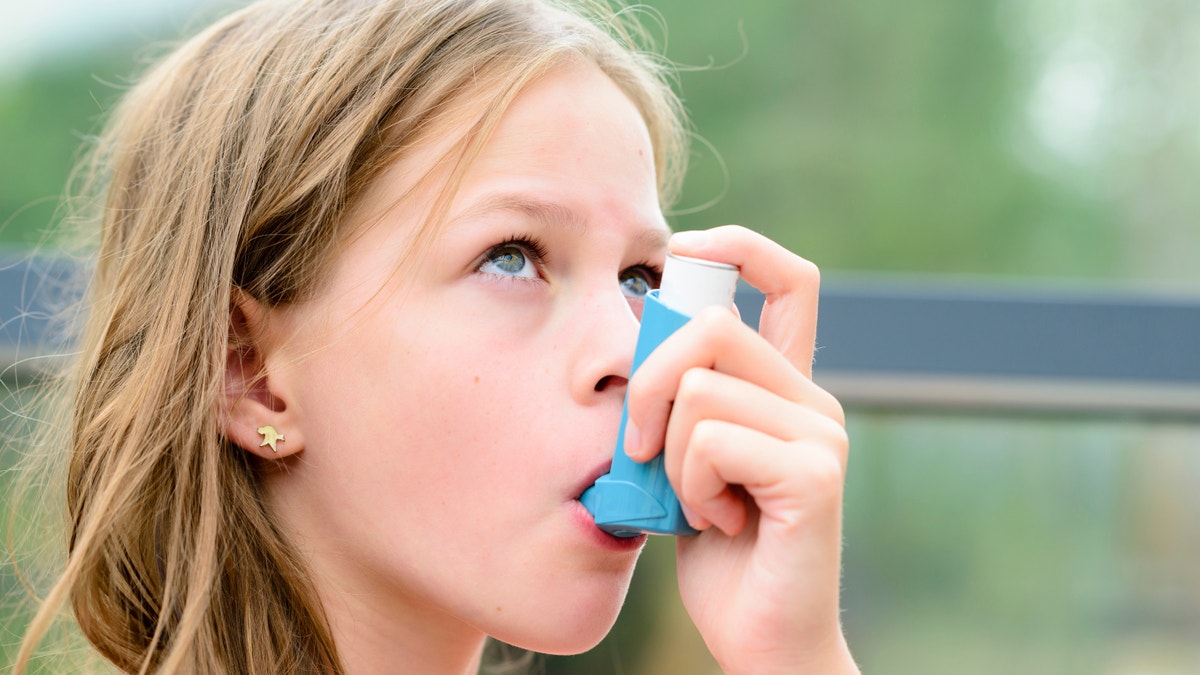
Girl having asthma using the asthma inhaler for being healthy - shallow depth of field - asthma allergy concept (iStock)
To avoid asthma attacks, children with the respiratory disease shouldn't breathe indoor air that's contaminated by pollutants and allergens known to aggravate their symptoms, U.S. doctors advise.
Reducing exposure to things like second-hand cigarette smoke, dust mites and furry pets may be as effective as medications at controlling asthma, according to a new report from the American Academy of Pediatrics.
Children may be particularly vulnerable to indoor environmental allergens and pollutants because their airways are still developing and because they may spend more time on the floor in closer contact to these irritants than adults, doctors argue in the report published October 31st in the journal Pediatrics.
"Exposure to indoor allergens, such as furry pet allergens, mice and cockroaches, and mold, are linked to more severe asthma," said lead report author Dr. Elizabeth Matsui of Johns Hopkins University in Baltimore.
"Children exposed to the things to which they are allergic may require a higher dose of daily asthma medication and have exacerbations more frequently," Matsui added by email. "Once these exposures are removed, children typically have a marked improvement in their asthma."
Asthma is one of the most common chronic childhood illnesses, affecting as many as 10 percent of U.S. children, researchers note in the report. Asthma rates are as high as 25 percent in some U.S. communities.
For the report, researchers focused on previous studies of indoor irritants and to explore how avoiding certain triggers for asthma attacks might help keep children healthier.
Up to about two-thirds of children with persistent asthma are allergic to cats and dogs, according to the report.
Dust mites and mold are more common in environments where humidity is high, the report notes. An estimated 30 percent to 62 percent of children with persistent asthma are allergic to dust mites, which are microscopic members of the spider family, and roughly half are sensitive to mold and regularly exposed to it.
Cockroaches and rodents may be an even bigger issue, however. Roughly 75 percent to 80 percent of U.S. homes contain detectable amounts of mouse allergen, the report says, and concentrations in homes in urban neighborhoods with high poverty rates are as much as 1,000-fold higher than those found in suburban homes.
While second-hand tobacco smoke exposure is a known problem, parents and caregivers also need to keep in mind that fumes and fine particles from gas ranges, wood stoves or fireplaces can be an irritant for some kids with asthma, the report also warns.
In addition, chemicals found in household cleaners and air fresheners can be respiratory irritants and trigger asthma symptoms.
Blood tests can help identify specific triggers for children with asthma and point parents in the right direction to remove irritants from the home, the report recommends.
Strategies to minimize indoor asthma triggers may include using high-efficiency particulate air (HEPA) filters and allergen-proof mattress, box spring and pillow encasements.
"The association of exposure to indoor irritants and allergens with poor asthma control and exacerbations has long been established," said Dr. David Stukus, a researcher at Nationwide Children's Hospital and The Ohio State University College of Medicine.
"However, the routine assessment of the indoor environment and recommendations for tailored interventions is not conducted for most children with asthma, partly due to lack of awareness and partly due to the amount of time it takes to be thorough," Stukus, who wasn't involved in the study, added by email.
Not all kids will be triggered by the same irritants, though, and parents may get a good result for kids by focusing on a select few pollutants or allergens that pose the biggest problem for their child, Stukus said.
"It is important to understand the multiple different types of exposures that can adversely affect anyone with asthma or allergies and how to reduce exposure. Even things with perceived benefit, such as essential oils or cleaning products, can be harmful to the sensitive airways of children with asthma," Stukus added. "Ongoing exposure to indoor irritants or allergens will lead to suboptimal control of asthma, risk for exacerbations, and ultimately decreased quality of life."
